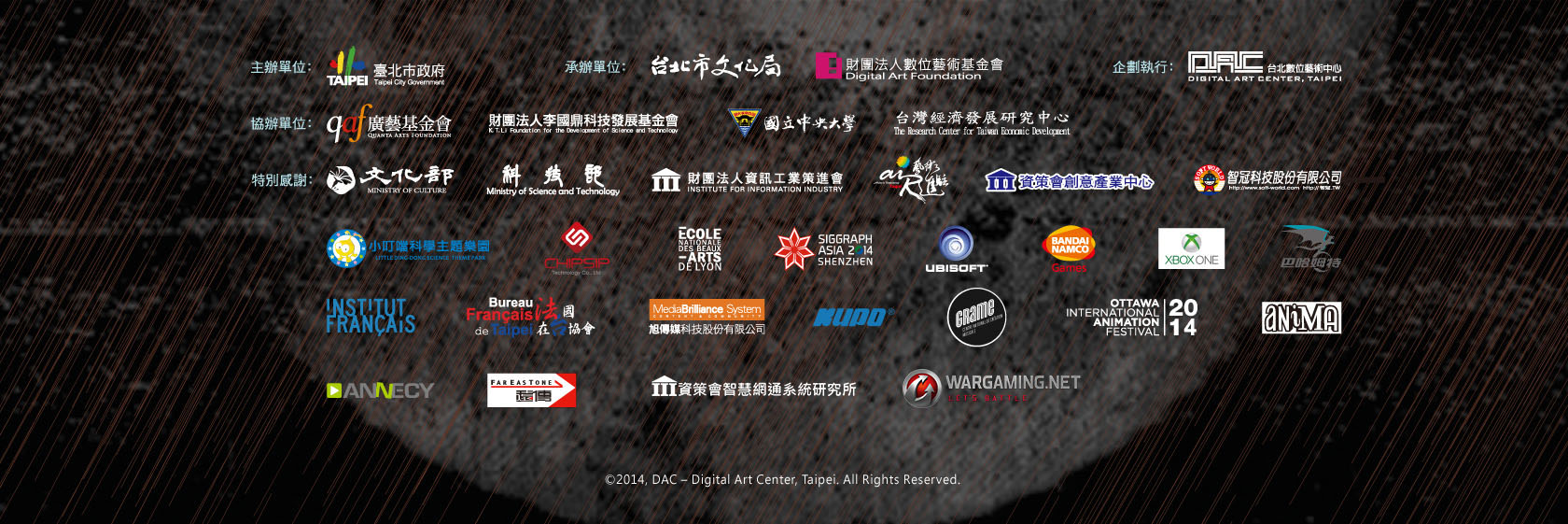
PHILOSOPHY CURATORIAL
The digital era is, purely and simply, an era of eco-system.
“Eco-system” is one of the central metaphors in the digital era. An “eco-system” refers to a specific mission that should be accomplished within a designated time. In the world where problems must be solved immediately, along with the inundation of digital tools and the great scarcity of time, we should no longer passively expect the unforeseeable modernist utopia or revolution. “Do it now!” has become an imperative in our era. The mission-based mode of problem-solving (i.e., managing different eco-systems one after another) has been applied extensively by the information society to identify and remedy its own deficiencies.
The extensive applications of digital tools result in the soaring productivity of machines. Humans are therefore liberated from physical labor and granted a surplus of brainpower, of which they take advantage to become “hackers” and “makers,” the important players in this era. In addition to individual operation, these players, by practicing their respective special skills and undertaking different responsibilities, also collaborate closely with one another on managing different eco-systems.
The International Digital Art Exhibition held during the 9th Digital Art Festival Taipei presents seven digital artworks by several renowned artists from Europe, America and Asia. The work “Eunoia” by Lisa Park clearly reveals the position of embodiment taken by humans with the advancement of digital technology. Information tools are the extension of human body and mind. What the discourse of artificial intelligence conveys is exactly the proposition that “machines have the ability of thinking.” Against this background, what makes us irreplaceable in the digital era is our ability to grasp the current situation, form value judgment promptly, and take actions accordingly. We would be unable to comprehend the significance and urgency of the imperative “Do it now!” without such kind of ability.
The works “Very Loud Chamber Orchestra of Endangered Species” by Pinar Yoldas and “Ocular Revision” by Paul Vanouse contribute to the management of “eco-systems” in two dimensions. On the one hand, the two works reflect the intersection of art, science and technology. The two artists expand and transform the way of perception conventionally adopted in the fields of ecology and genetic engineering, creating a miniature nature and laboratory in the exhibition venue. On the other hand, the solution of “information visualization” that the two artists try hard to develop in order to clearly and concisely convey information is exactly an indispensable tool for people to make prompt decision in the digital era.
To collaborate on managing eco-systems, it becomes strategically vital to know how to shift among perspectives, that is, to assess the overall situations of different eco-systems from others’ perspectives. The work “Gender Swap” is a part of the project The Machine to Be “Another” initiated by the BeAnotherLab. This work enables two users of different genders to swap perspectives with the head-mounted displays, through which they directly experience each other’s horizons. Such kind of swap is contributory to the formation of eco-systems and the accomplishment of our missions, if you will.
The work “Pendulum Choir” by Cod.Act as well as the works “AutoGene” and “SoleNoid β” by Peter William Holden represent miniature eco-systems that possess acoustic, spatial, and mechanical features. “Pendulum Choir” sets the choir members who serve as the source of voices in motion with kinetic installations. The stage is no longer a fixed platform, but a constantly changing soundscape. Similarly, “AutoGene” and “SoleNoid β” immerse the viewers in the impressive mechanical performances. The design of mechanical dancing surprisingly produces the audio-visual effects usually exhibited by animations. In these miniature eco-systems, different sensory media collectively create an experience that the viewers will remember.
“Eco-system” is the underlying theme of the 9th Digital Art Festival Taipei. The festival consists of four main events, including the International Digital Art Exhibition, Digital Art Awards (incl. Digital Art Awards Taipei, Digital Art Criticism Awards, and K.T. Creativity Award), Digital Art Platform (incl. 2014 AnimA, International Artist in Residence Exhibition, and The Art of Video Games), as well as associated events of education and promotion. Besides, the Instrumental Design in the festival this year will introduce a brand new experimental project on visual guidance. By and large, only when artists and designers collaboratively and successfully manage various eco-systems in an interdisciplinary manner can we cognize that digital artworks not only embody the application value of innovative wearable technologies but also serve as avant-garde illustrations of experiments on combining human bodies with mobile devices that help humans transcend their physical limitations.



